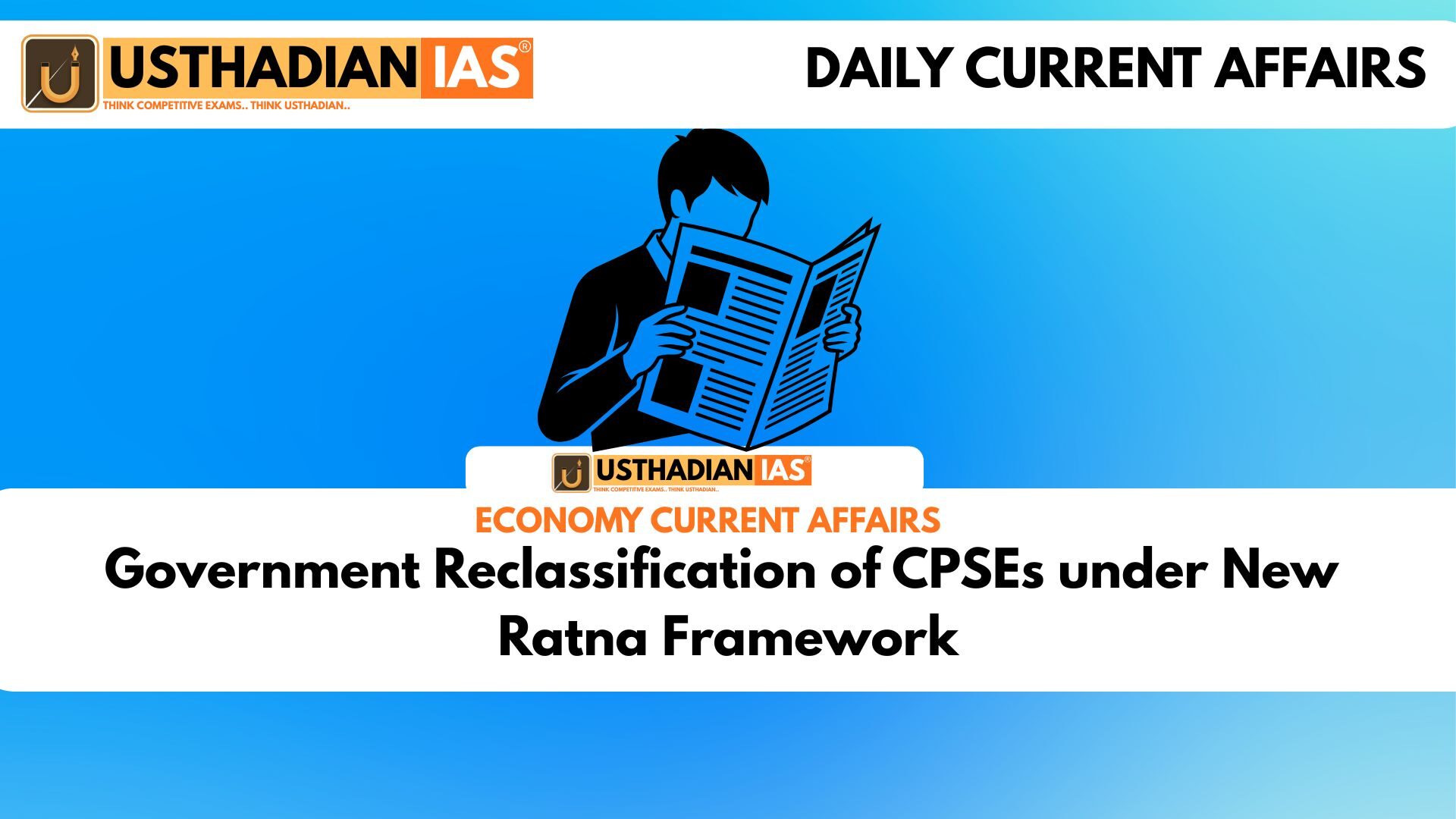Redefining the Public Sector Landscape
Government Reclassification of CPSEs under New Ratna Framework: The Government of India is introducing a major reform for Central Public Sector Enterprises (CPSEs) by revising their classification structure. Under the new plan, two additional ‘Ratna’ categories will be introduced to enhance performance, governance, and accountability. This initiative aligns with Vision 2047, which aims to transform India into a developed economy by the centenary of independence.
The reform intends to replace outdated evaluation systems with a more dynamic framework that rewards innovation, sustainability, and competitiveness among CPSEs.
Understanding CPSEs
Central Public Sector Enterprises are entities in which the central government holds at least 51% ownership, either directly or through another CPSE. These enterprises operate under the Companies Act, 2013, or are established through a Parliamentary Act.
They play a critical role in India’s economy, especially in sectors like energy, infrastructure, defence, and heavy industries. Subsidiaries of existing CPSEs also fall under this category.
Static GK fact: The concept of CPSEs originated in the early years after independence to build India’s industrial base under the Five-Year Plans.
Current Ratna Structure
CPSEs are currently classified into three categories based on financial strength and autonomy:
- Maharatna: 14 enterprises
- Navratna: 26 enterprises
- Miniratna: 74 enterprises
These categories determine the degree of operational and financial autonomy.
Static GK Tip: Maharatna companies like ONGC, NTPC, and Indian Oil Corporation can invest up to ₹5,000 crore without government approval.
Why Reclassification Is Needed
The new classification aims to create a next-generation CPSE ecosystem that is performance-driven and globally competitive. The key goals include:
- Aligning CPSEs with India’s long-term economic priorities
- Promoting corporate governance and transparency
- Encouraging sustainable business models in line with global ESG norms
- Enhancing efficiency in capital expenditure and investments
- Building leadership pipelines through succession planning
These changes reflect the government’s intent to prepare public enterprises for technological transformation and international competition.
New Evaluation Framework
A 10-member committee, chaired by Cabinet Secretary T.V. Somanathan, is reviewing the reclassification model. Their report is expected before the Union Budget 2026–27.
The new assessment metrics will go beyond profit-based evaluation. It will include:
- Governance quality and management practices
- Investment efficiency and capital utilisation
- Dividend payout ratio
- Sustainability initiatives
- Alignment with Vision 2047 objectives
This re-evaluation marks a strategic shift towards long-term value creation instead of short-term profitability.
Significance of Ratna Categories
The Ratna framework, launched to empower CPSEs with greater autonomy, has been instrumental in improving their decision-making capacity. The introduction of two new Ratna tiers will enable a more nuanced classification, helping medium-scale enterprises grow into major players.
It is expected that this move will promote sectoral champions in areas vital to economic security such as energy, infrastructure, and digital technology.
Static Usthadian Current Affairs Table
Government Reclassification of CPSEs under New Ratna Framework:
| Topic | Detail |
| CPSE Definition | Companies with 51% or more central government ownership |
| Current Classification | 14 Maharatna, 26 Navratna, 74 Miniratna |
| New Proposal | Two additional Ratna categories |
| Committee Head | T.V. Somanathan, Cabinet Secretary |
| Key Evaluation Factors | Governance, succession, investment efficiency, sustainability |
| Ministry Involved | Department of Public Enterprises |
| Governing Law | Companies Act, 2013 |
| Vision Alignment | Vision 2047 for developed India |
| Report Timeline | Before Union Budget 2026–27 |
| Core Objective | Modernisation and global competitiveness of CPSEs |








